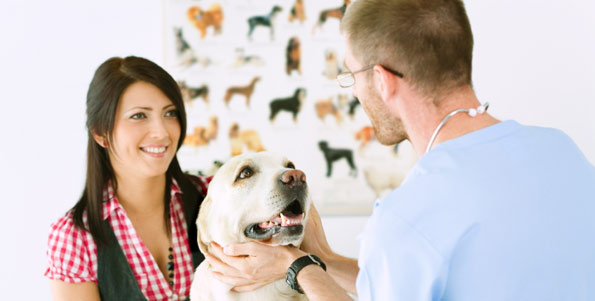Top Mistakes to Avoid Before, During, and After tplo surgery
Top Mistakes to Avoid Before, During, and After tplo surgery
Blog Article
Why Pet Rehabilitation Is Essential: the Conveniences of Veterinarian Solutions for Your Pet dog's Healing
Pet rehabilitation is a crucial element of recuperation for animals facing injuries or specials needs. Veterinary solutions provide critical assistance through tailored rehab strategies that attend to individual needs. These strategies usually consist of pain management, physical treatment, and nutritional assistance. Understanding the various elements of animal rehab can brighten its relevance in boosting recuperation outcomes. What particular benefits do these solutions provide, and how can they change a pet's healing trip?
Comprehending Animal Rehabilitation
Animal recovery incorporates a variety of restorative practices targeted at recovering the health and capability of injured or impaired pets. This area incorporates different techniques, including physical treatment, hydrotherapy, and work treatment, customized to fulfill the specific needs of each animal. Recovery specialists examine an animal's condition, developing customized treatment strategies that might include workouts to strengthen muscular tissues, enhance flexibility, and boost overall wellness. The process not just concentrates on physical healing however likewise addresses psychological and behavioral elements. Animals frequently experience tension and stress and anxiety complying with an injury, making psychological health and wellness considerations crucial in rehab. By creating a supportive environment, specialists can help animals reclaim their self-confidence and adapt to their brand-new conditions. Through regular sessions, pets can experience considerable improvements, ultimately resulting in a much better lifestyle. On the whole, recognizing pet recovery highlights its importance in advertising recovery and boosting the bond in between pet dogs and their owners.
The Function of Discomfort Management in Healing
Exactly how necessary is efficient pain administration in the recovery of hurt animals? It plays an important role in assisting in recovery and improving the total well-being of pet dogs. Appropriate pain management not only minimizes pain yet likewise promotes wheelchair, enabling animals to get involved in rehabilitation activities essential for recuperation. When discomfort is successfully handled, pets tend to react favorably to therapy, leading to quicker rehab outcomes.Veterinarians use various techniques to evaluate and address discomfort, consisting of medicines, acupuncture, and different therapies. By customizing pain management approaches to the specific needs of each pet, veterinarians can assure that animals stay calm and cooperative throughout their recuperation journey. Lessening pain aids lower anxiety, which can hinder healing and prolong recuperation times. To sum up, effective discomfort management is necessary for boosting the recuperation process and enhancing the lifestyle for injured animals.
Physical Treatment Methods for Pet Dogs
Numerous physical treatment methods are readily available to aid in the recovery of pets recovering from injuries or surgeries (canine tplo surgery). These strategies can boost wheelchair, alleviate discomfort, and advertise recovery. Therapeutic workouts, for example, aid strengthen muscular tissues and boost joint function, enabling pet dogs to regain their physical capabilities slowly. Hand-operated treatment, that includes massage therapy and mobilization, can reduce stress and improve circulation, adding to a much faster recovery.Other strategies such as passive array of motion workouts motivate joint flexibility and reduce stiffness. Furthermore, electrical stimulation treatment may be employed to boost nerves and muscular tissues, promoting recovery and pain relief.Veterinary specialists usually tailor these techniques to every animal's certain requirements, ensuring a thorough recovery strategy. By implementing these physical therapy techniques, animals can experience enhanced top quality of life and a much more effective recovery from their conditions. The combination of these practices into rehab programs is necessary for excellent healing results
Benefits of Hydrotherapy for Rehab
Hydrotherapy offers substantial benefits in animal recovery, particularly in improving wheelchair. This water-based therapy advertises discomfort alleviation while offering comfort to wounded or recuperating pets. Additionally, it facilitates strength-building workouts that contribute to general physical recovery.
Enhanced Flexibility Improvement
As animals recuperate from injuries or surgical treatments, boosted flexibility often ends up being a main goal of their rehab. Hydrotherapy functions as an important device in attaining this purpose. With water-based workouts, animals can engage in low-impact motions that facilitate joint mobility and enhance muscles without the tension of weight-bearing activities. The buoyancy of water sustains their bodies, permitting boosted series of movement and movement enhancement. In addition, hydrotherapy motivates far better balance and sychronisation, which are essential for restoring regular activity patterns. Normal sessions can lead to significant progress in a pet's physical capabilities, eventually boosting their top quality of life. This strategy not only aids in healing yet also promotes a more energetic and meeting way of life post-rehabilitation.
Pain Relief and Comfort

Remedy for discomfort is an essential aspect of animal rehabilitation, and hydrotherapy greatly contributes to this process. By using water's buoyancy, hydrotherapy minimizes joint anxiety and relieves pain throughout activity. This healing technique provides a comforting setting where animals can participate in mild exercises without the full weight of their bodies influencing their recovery. The cozy water promotes blood flow, advertising healing while also urging leisure. Furthermore, hydrotherapy sessions can be customized to meet the specific demands of the pet, making certain excellent comfort. As pet dogs experience minimized discomfort and raised convenience degrees, their overall willingness to take part in rehab activities often enhances, resulting in a more effective recovery journey. Hydrotherapy offers as a vital tool in improving discomfort relief and convenience throughout rehabilitation.
Toughness Structure Exercises
Strength-building workouts play an important function in the recovery process, with hydrotherapy offering special advantages. This kind of treatment makes use of water resistance to improve muscle mass toughness without putting too much stress on the joints. The buoyancy of water supports the family pet's weight, permitting much safer motion and raised series of motion. Furthermore, hydrotherapy can boost cardio health and wellness and promote total physical fitness, aiding in quicker healing from injuries or surgical procedures. The regulated setting likewise lessens the risk of reinjury, making it an optimal option for family pets requiring rehab. Regular hydrotherapy sessions can result in obvious renovations in wheelchair, stamina, and endurance, inevitably enhancing the pet's quality of life and capability to go back to regular tasks.
Value of Custom-made Rehabilitation Strategies
Customized rehabilitation strategies are necessary for attending to the unique needs of each pet, guaranteeing customized treatment approaches. These strategies enable reliable development tracking and essential changes, cultivating optimal healing end results. Additionally, a holistic method can boost the total health of the pet, advertising an extra comprehensive rehabilitation experience.
Individualized Treatment Approaches
While numerous rehab programs adopt a one-size-fits-all strategy, the one-of-a-kind needs of each pet require personalized treatment prepare for perfect recovery. Customized rehabilitation plans take into consideration different elements, consisting of the animal's types, age, clinical history, and particular injuries or problems. By customizing interventions, vets can address each canine tplo surgery pet's distinct challenges, making best use of the effectiveness of the rehab procedure. Embellished strategies may incorporate different modalities such as physical treatment, hydrotherapy, and healing workouts, guaranteeing that the therapy straightens with the animal's capacities and progression. In addition, customized strategies foster a stronger bond in between the pet dog and the caregiver, advertising a much more appealing and helpful recuperation setting. Inevitably, personalized therapy is crucial for accomplishing finest possible end results in animal rehabilitation.
Development Monitoring and Adjustments

Holistic Recuperation Methods
Holistic recovery methods are important for efficient pet rehab, as they stress the importance of individualized therapy strategies tailored to every animal's particular requirements. This approach takes into consideration the physical, emotional, and environmental variables impacting recovery. Customized rehabilitation strategies might consist of a combination of physical therapy, dietary counseling, and behavior modifications. By resolving these diverse elements, veterinarians can boost the overall well-being of the animal and promote a much faster recuperation. Such tailored approaches promote a deeper understanding of the animal's distinct obstacles, leading to extra reliable interventions. Eventually, alternative recovery strategies not only improve physical health but likewise contribute to the pet's mental and psychological stability, making certain a detailed recovery experience.
The Influence of Nutrition on Recovery
Nourishment plays an essential duty in the healing process for restoring pets, typically determining the speed and efficiency of healing. A healthy diet gives the needed nutrients that support cells repair work, increase the body immune system, and boost total vitality. Protein is particularly important, as it aids in muscle mass rebuilding and recuperation from injuries. Essential fatty acids, vitamins, and minerals likewise add to minimizing inflammation and promoting ideal mobile function.Veterinarians frequently stress the value of customized nourishment strategies, taking into consideration each animal's particular demands, age, and health and wellness standing. Appropriate hydration is equally essential, as liquids facilitate vitamins and mineral absorption and help in detoxing. By making sure that pet dogs receive ideal nourishment, caregivers can substantially enhance their possibilities of an effective recovery, resulting in far better long-lasting health results. Ultimately, nutrition offers as a foundational aspect in the rehabilitation journey, supporting pets in regaining stamina and resilience post-injury or illness.
Success Stories: Pet Dogs That Thrived After Rehabilitation
Effective rehabilitation stories abound, showcasing the resilience of animals who have actually gotten rid of substantial obstacles. Take, for example, Bella, a golden retriever who suffered severe injuries from an automobile mishap. With devoted vet care and a complete rehabilitation program, she restored her wheelchair and returned to her playful self, much to her owner's joy. Max, an elderly pet cat identified with joint inflammation, experienced exceptional enhancement via a combination of physical therapy and discomfort management. His newly found agility enabled him to appreciate his favored sunbathing spots again. Another inspiring situation is that of Coco, a rescued greyhound who conquered anxiousness through therapy and socializing strategies, allowing her to thrive in her brand-new home. These success stories exemplify the transformative power of pet recovery, emphasizing that with the right assistance, pet dogs can not only recoup however lead meeting lives, enhancing the bonds they share with their families.
Often Asked Concerns
How Lengthy Does the Recovery Refine Generally Take for Pets?
The recovery procedure for family pets typically differs based upon the injury or problem, ranging from a couple of weeks to a number of months. Individual development, therapy kind, and dedication to workouts considerably influence the general duration of recuperation.
Are There Any Kind Of Risks Related To Animal Recovery?
Animal rehabilitation may carry risks such as worsening of injuries, incorrect methods resulting in pain, or inadequate surveillance during recovery. These elements can impede progress and affect the general performance of the rehabilitation process.

Can All Pets Gain From Rehabilitation Services?
Not all pet dogs might need recovery, but many can profit considerably. Recovery services can boost flexibility, relieve pain, and improve total wellness, particularly for those recuperating from injuries, surgical procedures, or chronic problems.
Just How Can I Prepare My Animal for Rehab Procedure?

What Signs Indicate My Family Pet Demands Rehabilitation?
Indicators indicating a pet might need rehabilitation include problem strolling, hopping, lowered activity levels, unwillingness to jump, or indicators of discomfort. Observing these behaviors can trigger owners to look for professional examination and treatment for their animals.
Report this page